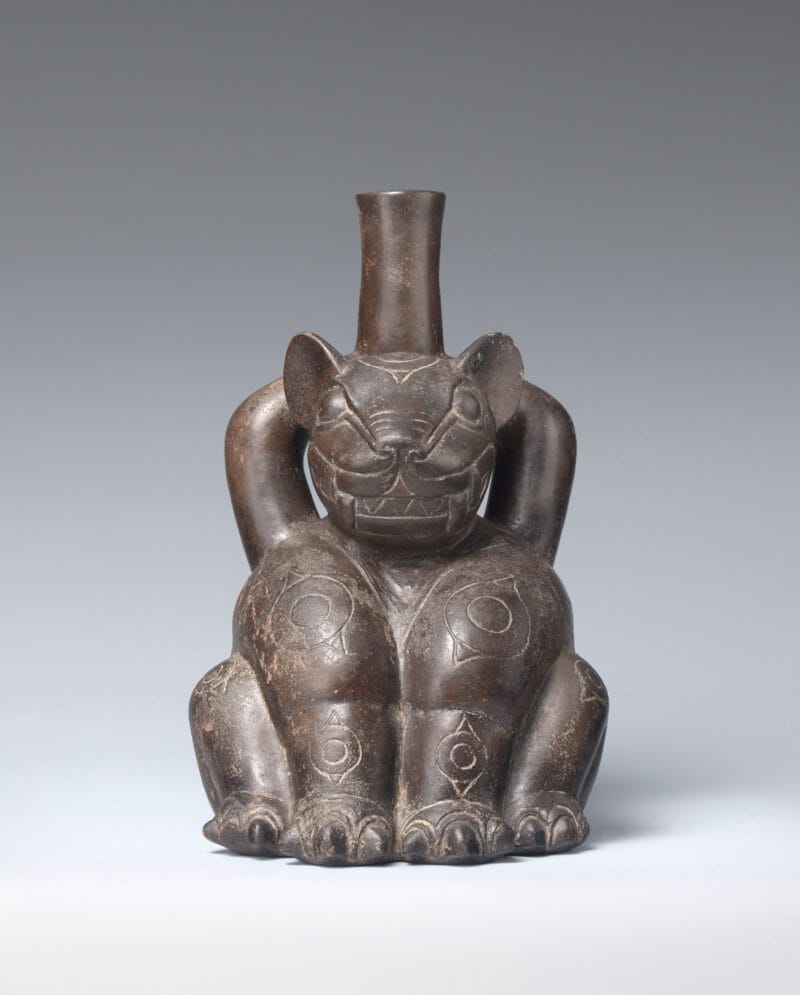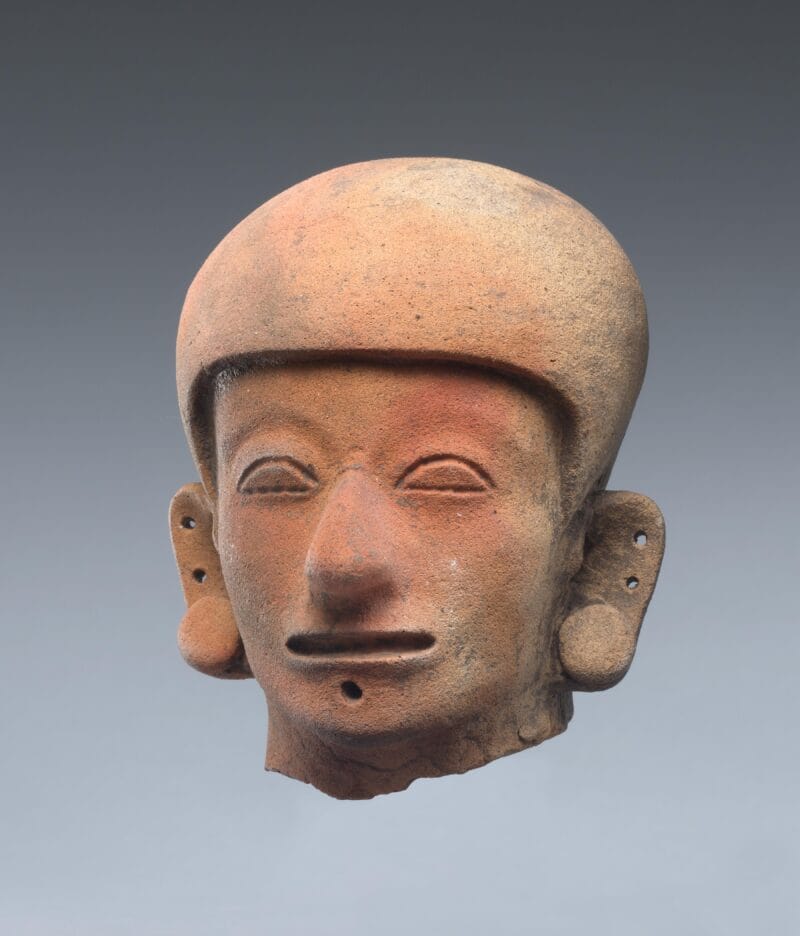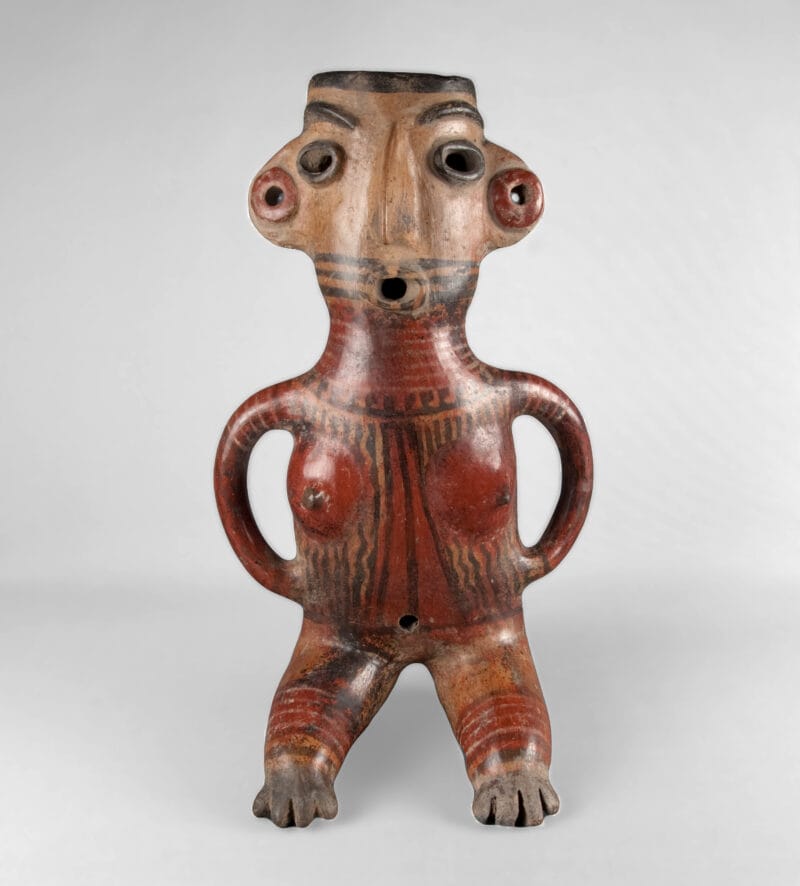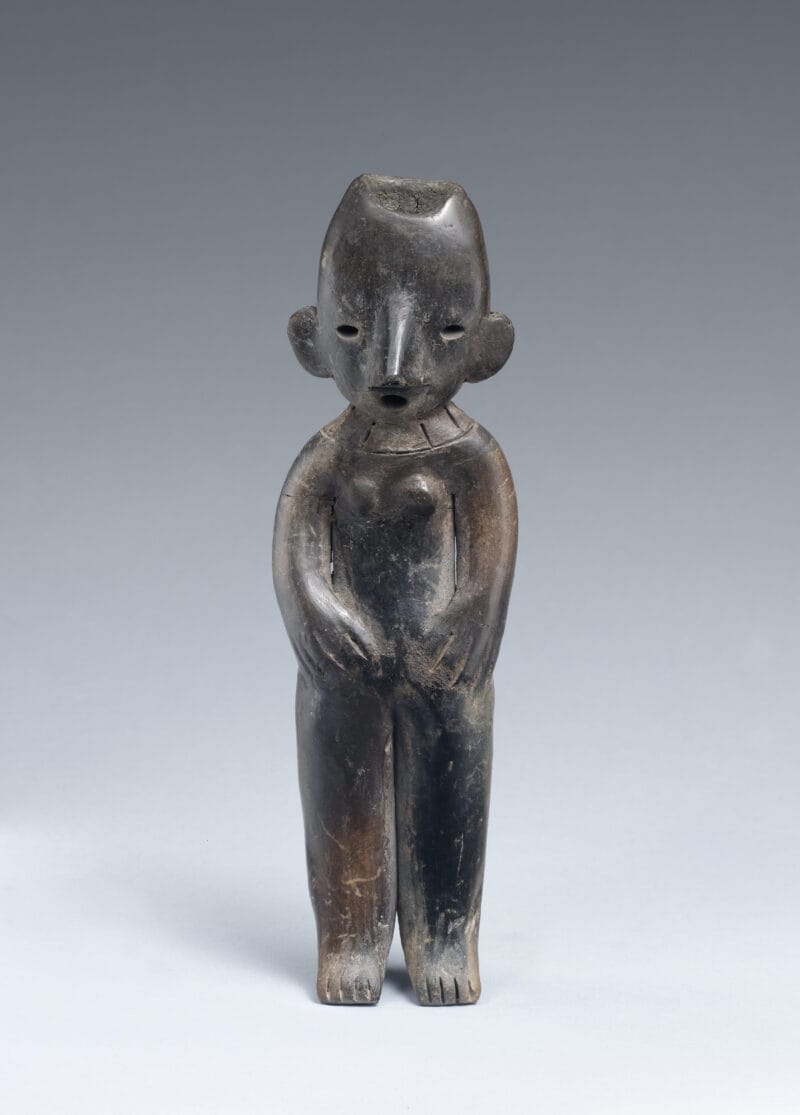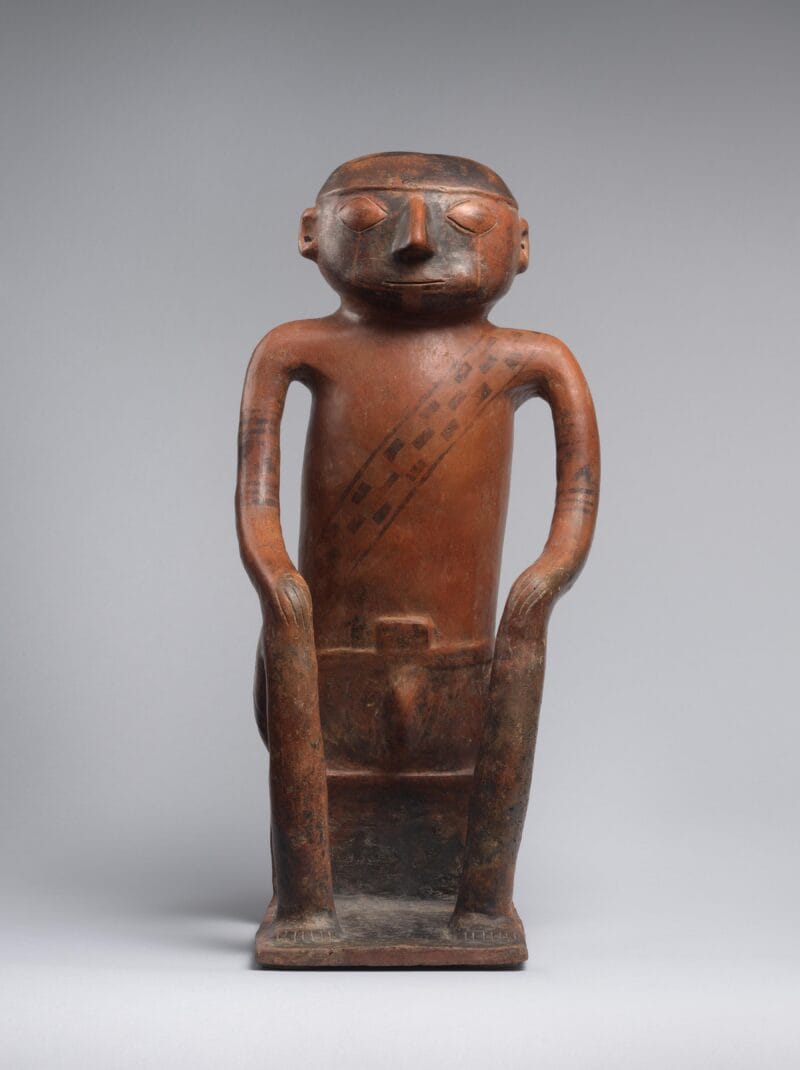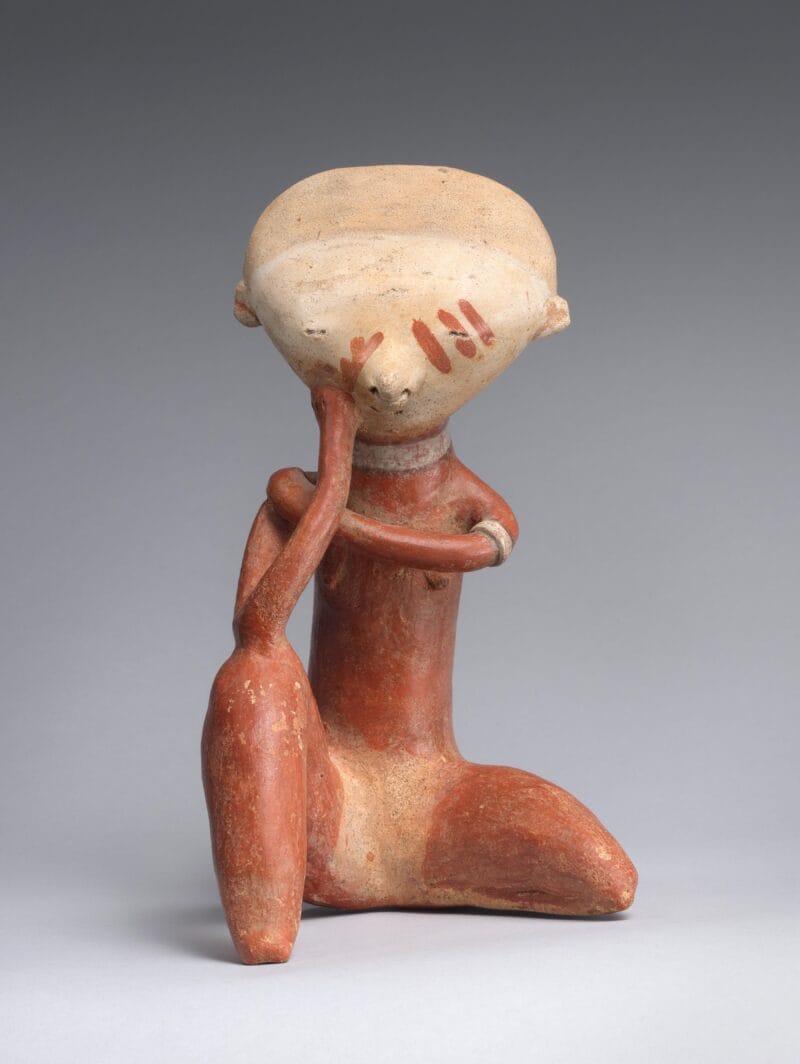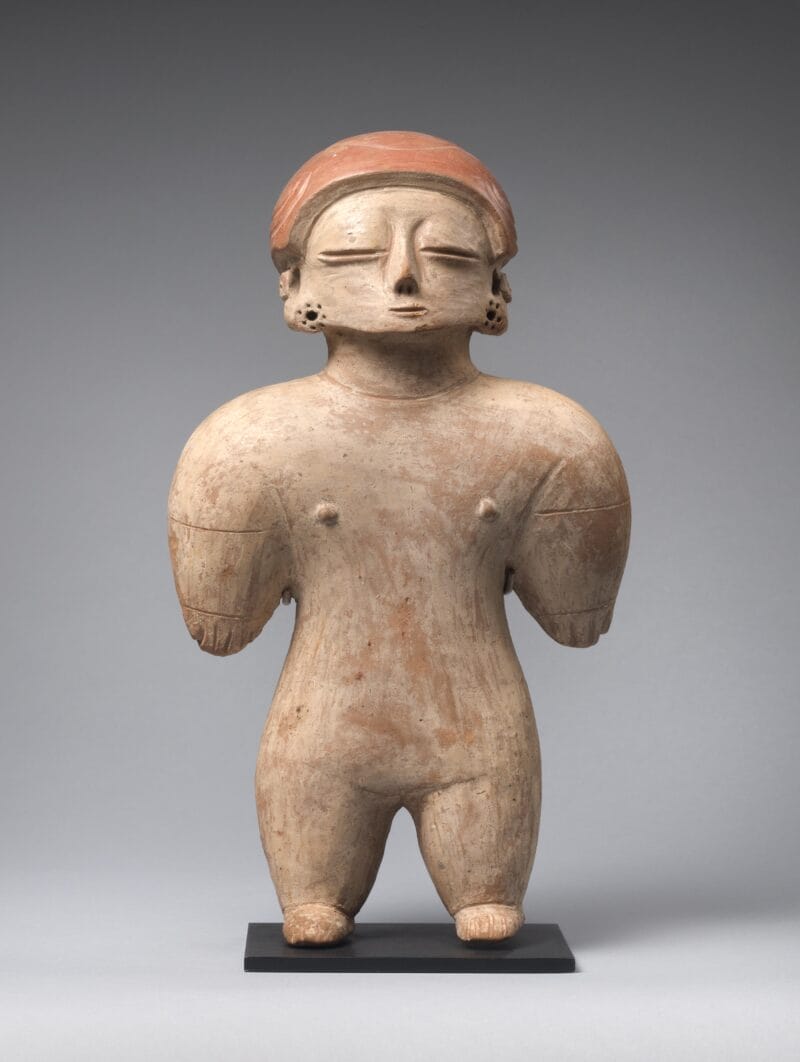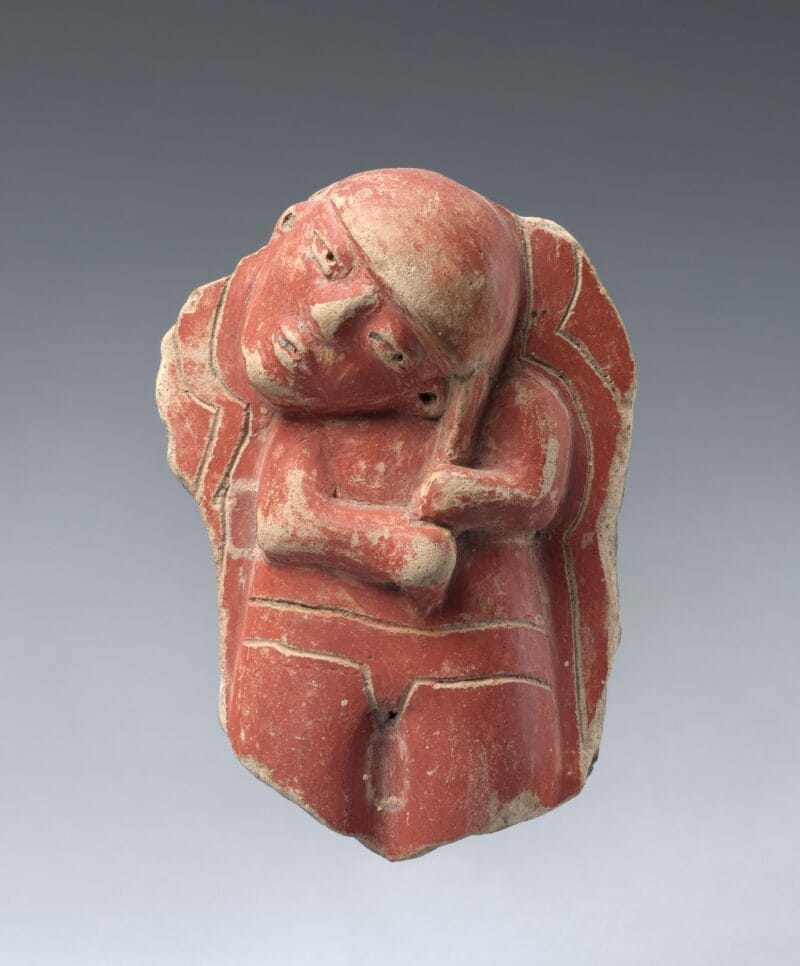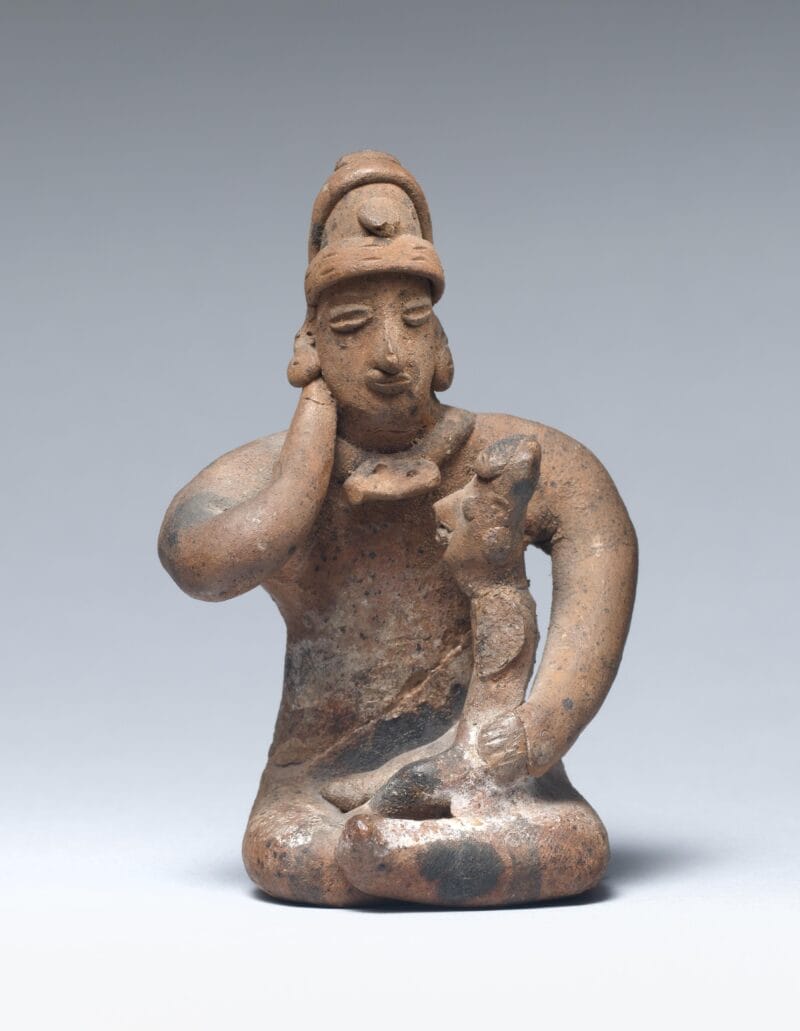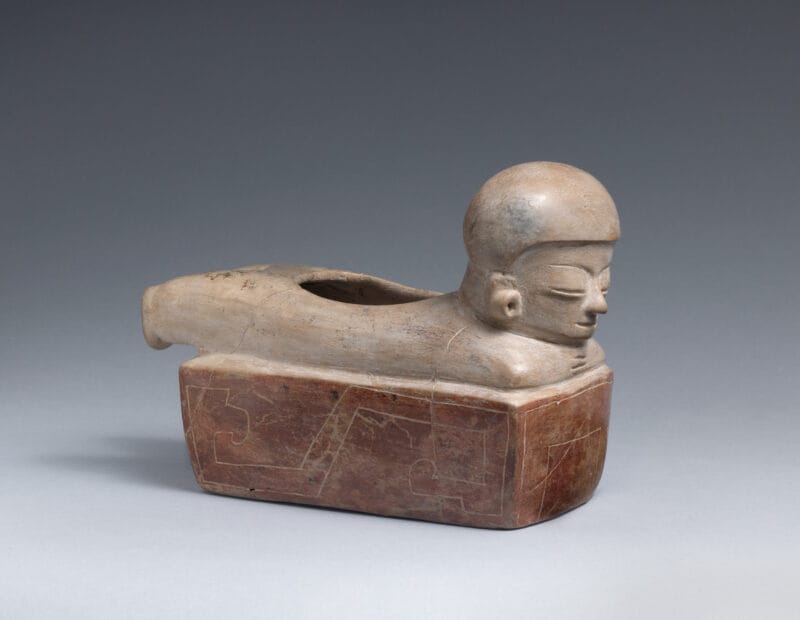
About the Object
This ceramic vessel slipped in a white and red glaze reveals a human figure with a helmet (or hairstyle and earplugs) lying on its stomach. Abstract designs depicting an avian (bird) figure are also apparent on the base of the figure. Like many Chorrera works that have been found, it was probably involved in rituals associated with a burial, though this type of vessel may also have been used in everyday life.
Additional Information
The Chorrera represent what Andean archaeologists refer to as the first “horizon” period in the history of Ecuador as their material culture can be found across the country from the Pacific to the Amazonian lowlands. Relying on corn (maize) and root crops like potatoes, the Chorrera were able to endure for nearly 700 years, from about 1000 BCE until around 355 BCE. Many scholars believe that the civilization collapsed around 467 BCE, when the Pululahua volcano erupted, spewing vast amounts of ash that would blanket the area from the South Esmeraldas Province to the South Manabí Province of modern Ecuador. Like the earlier Valdivia who were similarly devastated by a volcanic eruption, Chorrera society was never able to recover from this event, though some elements of Chorrera culture survived for a few centuries until they were replaced by the cultures of the Regional Development Period.
Private Collection, France;
[Ron Messick Fine Arts, Santa Fe, NM];
Related Objects
You may also be interested in
Vilcek Foundation supports “Grounded in Clay: The Spirit of Pueblo Pottery”
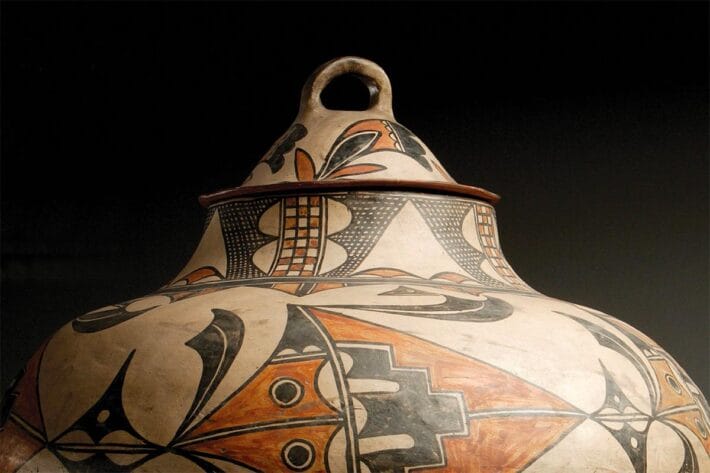
Ryo Toyonaga: Mephistophelean
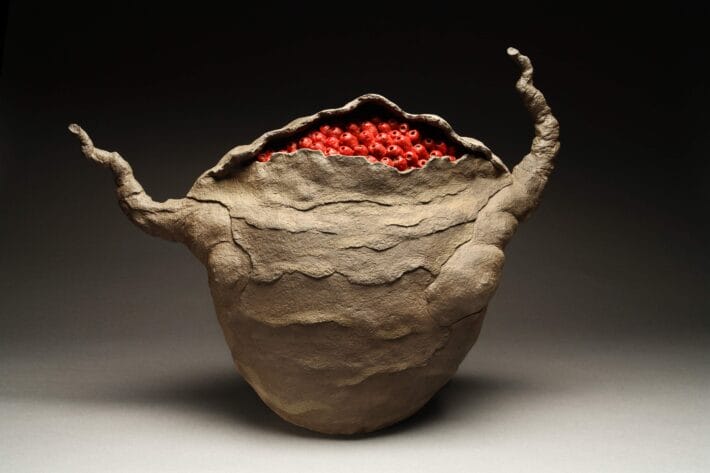
Meleko Mokgosi

